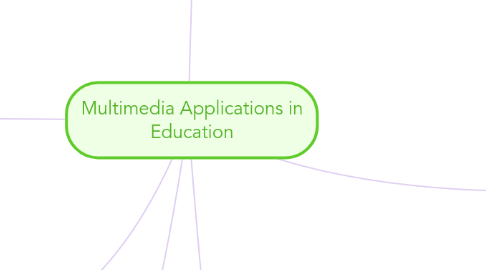
1. Expressing Information
1.1. Infographics
1.1.1. Information Graphic
1.1.2. visual representation of information
1.1.3. enhances understanding by seeing patterns, trends, and quantities
1.2. How to enhance learning
1.2.1. statistics and figures in context are easier to understand graphically
1.3. How to enhance instruction
1.3.1. quantitative data better delivered visually
2. Protecting Your Digital Tatoo
2.1. Academic Integrity
2.1.1. plagiarism
2.2. Cyberbullying
2.2.1. difficult to decide who has authority
2.3. Digital Citizenship
2.4. Netiquette
2.5. Security
3. Your Digital Toolbox
3.1. iBeacon
3.1.1. context-sensitive learning
3.2. Google Cardboard
3.2.1. virtual reality
3.2.2. virtually visit other places
3.3. Doceri
3.3.1. mobile whiteboard
3.3.2. screencasts for flipped classroom
3.3.3. annotate presentations
3.3.4. share with students
3.4. Quizlet
3.4.1. digital flashcards
3.4.2. rote memorization
3.4.3. tracks card proficiency
3.4.4. quiz and game modes
4. Keeping Current
4.1. Technologies Introduced
4.1.1. RSS
4.1.1.1. Readers
4.1.1.1.1. Feedly
4.1.1.1.2. Newsblur
4.1.1.2. Feeds
4.1.1.2.1. Mindshift
4.1.1.2.2. ISTE Connects
4.1.1.2.3. Inside Higher Ed
4.1.1.3. Strategy
4.1.1.3.1. Check feeds on a daily basis
4.2. How to enhance learning
4.2.1. Students follow feeds
4.2.1.1. Types of feeds
4.2.1.1.1. Content experts
4.2.1.1.2. Other students' blogs
4.2.1.1.3. Teacher's feed
4.3. How to enhance instruction
4.3.1. Suggest useful feeds for students to follow
4.3.2. Follow student blogs
4.3.3. Students present on topic from a feed
5. Encouraging Creativity
5.1. TED Talks
5.1.1. Do schools kill creativity?
5.1.1.1. Ken Robinson
5.1.1.2. The dancing girl who needed to move to think
5.1.1.3. Arts secondary to math, science, and language
5.1.2. Bring on the learning revolution!
5.1.2.1. Ken Robinson
5.1.2.2. Models of education
5.1.2.2.1. Industrial
5.1.2.2.2. Agricultural
5.1.3. What adults can learn from kids
5.1.3.1. Adora Svitak
5.1.3.2. Adults should value a child's opinion and ideas
5.1.3.3. Collaboration between adults and children
5.1.4. Tales of creativity and play
5.1.4.1. Tim Brown
5.1.4.2. Play
5.1.4.3. Create
5.1.4.4. Explore
5.1.5. Hack a banana, make a keyboard!
5.1.5.1. Jay Silver
5.1.5.2. Make music with pizza...
5.1.5.3. Use things for what they're not intended for
5.2. How to enhance learning
5.2.1. Approach a problem from a different angle
5.2.2. Use things you don't normally use
5.2.3. Create your own problem for someone else to answer
5.2.4. Don't feel bad for making a mistake
5.3. How to enhance instruction
5.3.1. Reduce limitations on assignments
5.3.2. Do not stigmatize mistakes
6. Organizing Understanding
6.1. Technologies
6.1.1. MindMeister
6.1.1.1. Freemium
6.1.1.2. Chrome App
6.2. Techniques
6.2.1. Mind Mapping
6.2.1.1. Organize thoughts in hierarchical structure
6.2.1.2. Complex ideas visualized
6.2.1.3. Create connections between ideas
6.2.1.4. Include multimedia for added effect
6.3. How to enhance learning
6.3.1. have students map a topic or course
6.3.2. students share mind maps to form new perspectives
6.4. How to enhance instruction
6.4.1. student mind maps provide insight into student understanding of concepts
6.4.2. teacher can adjust based on student mind maps

